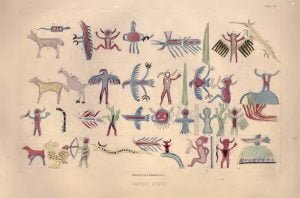The Island of the Blessed – or the Hunter’s Dream
There was once a beautiful girl, who died suddenly on the day she was to have been married to a handsome young hunter. He had also proved his bravery in war, so that he enjoyed the praises of his tribe, but his heart was not proof against this loss. From the hour she was buried, there was no more joy or peace for him. He went often to visit the spot where the women had buried her, and sat musing there, when, it was thought by some of his friends, he would have done better to try and amuse himself … Read more


